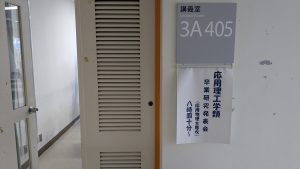Performance -Improvement Mechanisms of Tin-Based Perovskite Solar Cells Prof. Marumoto
To improve the durability of tin perovskite by suppressing tin oxidation, a method that introduces large organic cations into tin perovskite crystals to form a two-dimensional layered structure called Ruddlesden-Popper (RP) tin-based perovskites has been proposed. However, the internal state of this structure and the mechanism by which it improves performance have not been fully elucidated.
In this study, researchers used electron spin resonance to investigate an RP perovskite solar cell’s internal state during operation from a microscopic perspective.
Perovskite solar cells have a structure in which hole and electron transport layers surround a perovskite crystal. First, when no light was irradiated on the RP perovskite solar cell, holes diffused from the hole transport layer to the RP perovskite. This led to the formation of an energy barrier at the hole transport layer-RP tin perovskite interface, which suppressed the backflow of electrons and hence improved the performance. Second, under sunlight irradiation, electrons moved from the RP tin-based perovskite to the hole transport layer, attributable to the high-energy electrons produced by short-wavelength light, such as ultraviolet rays. Further, they found that this electron transfer increased the energy barrier at the hole transport layer-RP tin perovskite interface, further improving the device’s efficiency.
Understanding the mechanism behind the performance improvements during device operation is crucial for developing highly efficient, long-lasting solar cells and will contribute to future research developments


